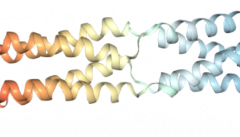
Équipes de recherche
Paper: Protéomique des stylets de pucerons | Une Première
Aphids are phloem-feeding insects known as major pests in agriculture able to transmit hundreds of plant viruses. The majority of these viruses, classified as noncirculative, are retained and transported on the inner surface of the cuticle of the needle-like mouthparts while the aphids move from plant to plant. Identification of receptors of viruses within insect vectors is a key challenge because they are promising targets for alternative control strategies. The acrostyle, an organ discovered earlier paving the common food/salivary canal at the tip of aphid maxillary stylets, displays proteins at the cuticle-fluid interface, some of which are receptors of noncirculative viruses. To assess the presence of stylet- and acrostyle-specific proteins and identify putative receptors, we have developed a comprehensive comparative analysis of the proteomes of four cuticular anatomical structures of the pea aphid, stylets, antennas, legs and wings. In addition, we performed a systematic immunolabeling detection of the cuticular proteins identified by mass spectrometry in dissected stylets. We thereby establish the first proteome of stylets of an insect and determine the minimal repertoire of the cuticular proteins composing the acrostyle. Most importantly, we propose a short list of plant virus receptor candidates, among which RR-1 proteins are remarkably predominant.
This paper is availble as an open-access on the web site of JPR, and has been published as part of a Bill & Melinda Gates grant (Marilyne Uzest and Stephane Blanc, UMR BGPI INRA Montpellier).

